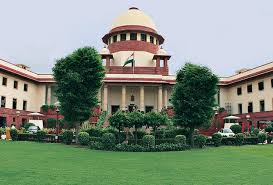Supreme Court reserves verdict on plea to remove A.P. High Court judge
The Supreme Court on Monday reserved verdict on a petition seeking the removal of the Andhra Pradesh High Court judge N. Venkata Ramana.

LEGAL CORRESPONDENT
NEW DELHI, January 22, 2013
The Supreme Court on Monday reserved verdict on a petition seeking the removal of the Andhra Pradesh High Court judge N. Venkata Ramana.
A Bench of Justices Aftab Alam and Ranjana Desai, hearing a quo warranto writ petition filed by advocates M. Manohar Reddy and M.V. Narasimha Reddy, reserved verdict after hearing senior counsel Shanti Bhushan for the petitioners and Attorney General G.E. Vahanvati, who assisted the court.
The petition questioned under what authority the judge was continuing in office on the ground that his appointment was vitiated as a criminal case was pending against him on the date when the recommendation for his appointment was made by then collegium of judges headed by then Chief Justice of the High Court.
At the outset, Justice Alam told Mr. Bhushan: “In this particular case, the collegium had twice rejected the name of this particular judge — on grounds of his eligibility to the post, age and other factors. But it was at the instance of then Union Law Minister [Ram Jethmalani] his appointment was made.”
In response to court directions, Mr. Vahanvati placed before the court, in a sealed cover, the petitioners’ complaint to the former CJI against Mr. Ramana, the response of the CJI and the correspondence then Law Minister had with the petitioners, who had forwarded an identical complaint.
Mr. Bhushan contended that on the date when the recommendation was made to appoint Mr. Ramana, he was declared as a ‘proclaimed offender’ in a criminal case and this fact was suppressed by him. On May 8, 2000, he was declared as a proclaimed absconder and, curiously, on June 27 that year he became a judge. Since it was a question of institutional integrity, this court should intervene and quash his appointment.
Justice Alam pointed out that on receipt of the complaint, then CJI forwarded the same to then Chief Justice of the High Court, who conducted an enquiry. It was found that the allegations were not only substantiated but due procedure contemplated under Cr.P.C. were not followed for declaring Mr. Ramana as a ‘proclaimed offender.’ When Mr. Bhushan compared the instance of the court quashing the post of Central Vigilance Commissioner, P.J. Thomas, Justice Alam pointed out that it was a statutory appointment, whereas Mr. Ramana’s appointment was a constitutional appointment, which could not be quashed through a quo warranto writ petition. A judge could be removed only through a procedure contemplated under the Judge’s Inquiry Act. According to the petitioners, on February 13, 1981, several students of Nagarjuna University in Guntur indulged in rioting and damage to public property, which included transport buses, and also injuries caused to passengers. On the same day, an FIR was registered at the Mangalagiri Police Station against the ringleaders of the arson, including as Accused No. 4, Shri Nuthalapati Venkata Ramana, who is cited as Respondent No.3 in the writ petition.

